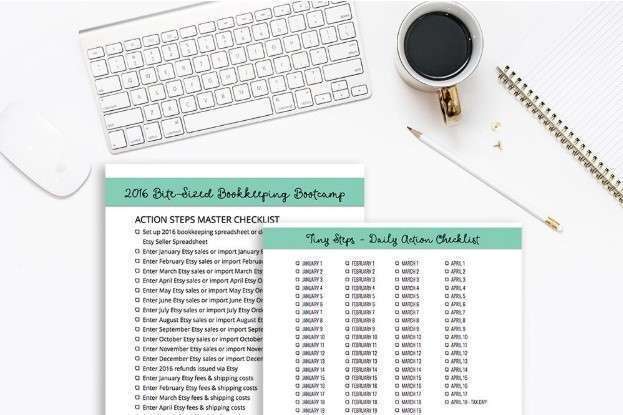
Double entry bookkeeping can also be easier to manage, as it provides a clear record single entry vs double entry bookkeeping of all financial activity. With the advent of modern accounting software, many of which are tailored to German tax regulations (like Norman), implementing double-entry accounting is more straightforward than ever. These tools automate much of the process, ensuring compliance and accuracy. When making these journal entries in your general ledger, debit entries are recorded on the left, and credit entries on the right. All these entries get summarized in a trial balance, showing the account balances and totals of your total credits and debits. If done correctly, your trial balance should show that the credit balance is the same as the debit balance.
Choosing the right system for your business 🔗
The possibility of errors and extortions is higher, and thus this method does not comply with the standards of GAAP. recording transactions Outsourcing your bookkeeping can be a great relief, especially if you’re not sure where to start or if you simply don’t have the time to keep on top of things. When you outsource your bookkeeping, you can be sure that your finances are in good hands, and you can focus on running your business. Towards the end of the last financial year, a particular company declared dividends of 43,000 €. This company should debit retained earnings and credit the dividend payable.

Single Entry vs Double Entry Bookkeeping: Differences
- For small businesses with simple financial transactions, the Single Entry System may be sufficient.
- This can be a good choice for small businesses with simple financial needs.
- This equation helps business owners understand the relationship between what they own, owe, and have invested in the company.
- Two primary methods, double-entry, and single-entry bookkeeping, offer distinct approaches to tracking financial transactions.
- While this may not seem like a big difference, it has implications for financial reporting and auditing complexity.
- Financial statements are then prepared from these journals and ledgers and summarize the income and expenses of a business for a specific timeframe.
For example, if a company receives $500 in cash from a customer, this transaction would be recorded as a $500 increase in the cash account. Single-entry bookkeeping is a method where each financial transaction is recorded only once as an income or an expense. Double-entry bookkeeping, is a system where each financial transaction is recorded twice, as both a debit and a credit entry. In a double entry accounting system, you record your financial statements in at least two accounts for your sales and expenses. Single entry bookkeeping is best suited for small businesses, or businesses with very simple financial transactions.
Who benefits from a single-entry accounting system?
When used with accounting software or AI tools, it becomes easier to catch fraud or missing transactions quickly. To automate your double-entry bookkeeping, you should choose user-friendly accounting software like QuickBooks, Xero, or FreshBooks. These tools allow you to easily track debits and credits, generate financial reports, and reduce the risk of human errors. This dual-entry system ensures financial accuracy by tracking the source (client payment) and destination (business revenue). Unlike single-entry bookkeeping, Budgeting for Nonprofits it provides a clearer financial picture.
“Shoeboxed makes it stupid simple to scan receipts…”
Now, let’s assume you have $10000 as cash balance at the beginning of March. The recording process starts with the existing cash balance you have. Then, if you receive cash from sale you add the amount and if you pay for something you deduct it from the balance.
- Don’t wait until errors or missed opportunities cost you.Don’t delay; Take the next step today!
- For larger companies, it is impractical to you, single entry bookkeeping, and will touch more on that in just a moment.
- She uses a variety of accounting software for setting up client information, reconciling accounts, coding expenses, running financial reports, and preparing tax returns.
- Conversely, small firms may find the simplicity of single-entry more suitable.
- That’s billions lost simply because of financial mismanagement and reporting errors.
However, it also means less oversight, and making mistakes can be easy. According to research by FinanceOnline, companies using AI-powered accounting systems have seen financial errors drop by up to 30%. Automation also makes it easier to match bank records and transactions accurately, giving business owners more time to focus on growth rather than sorting through spreadsheets. Is there a way to track your business finances without complicated accounting rules? Well, the answer is yes.We can do it by using Single-Entry Bookkeeping!

If you’re juggling dozens of invoices, double-entry is your best friend. The system ensures your financial data stays accurate and provides insights that single-entry simply can’t offer. This system offers a complete picture of your finances and minimises errors. Plus, accountants swear by it when preparing those daunting financial statements.
Types of Double Entry Accounting Systems
Small mistakes like not tracking payments properly, missing receipts or misclassifying expenses eventually produce substantial financial damage in the long term. This lack of reliable financial records leads companies to plan inaccurate budgets and forecasting, which can cause poor financial decisions and results. Single-entry bookkeeping uses a cash book to track revenue and spending. First, begin with your current cash balance for a specific period, then add your income and subtract any expenses you incur.


